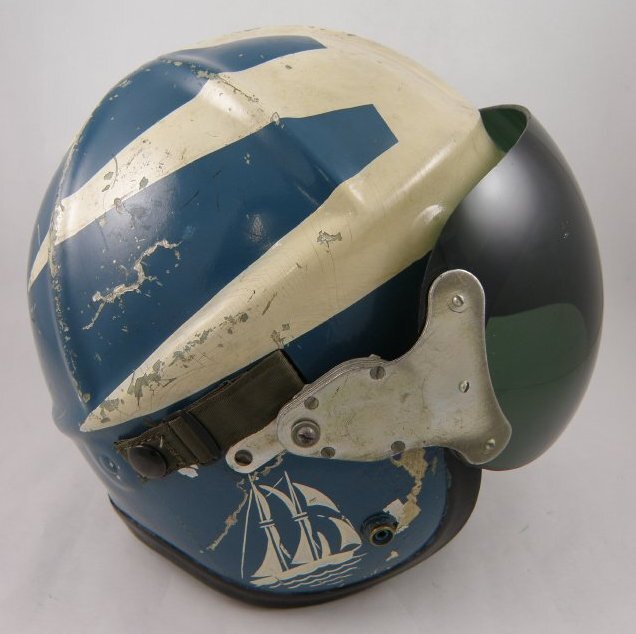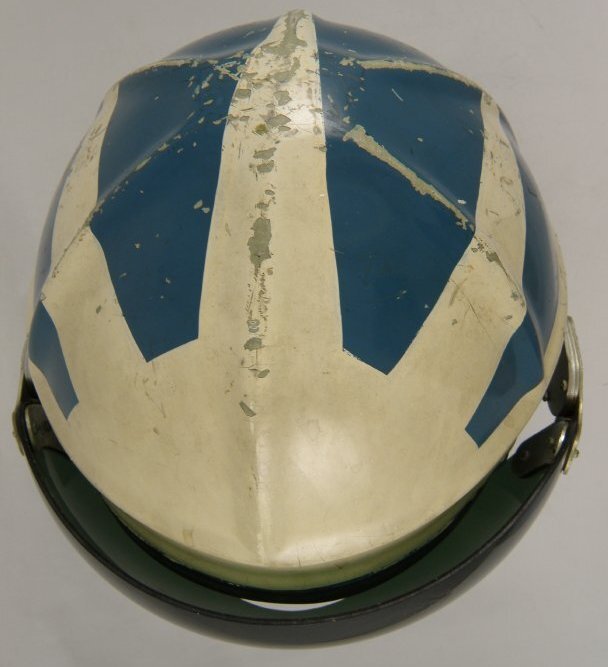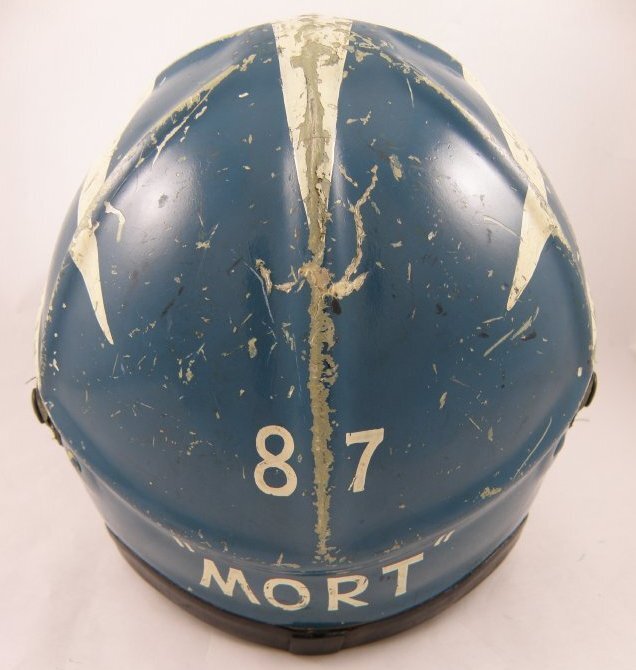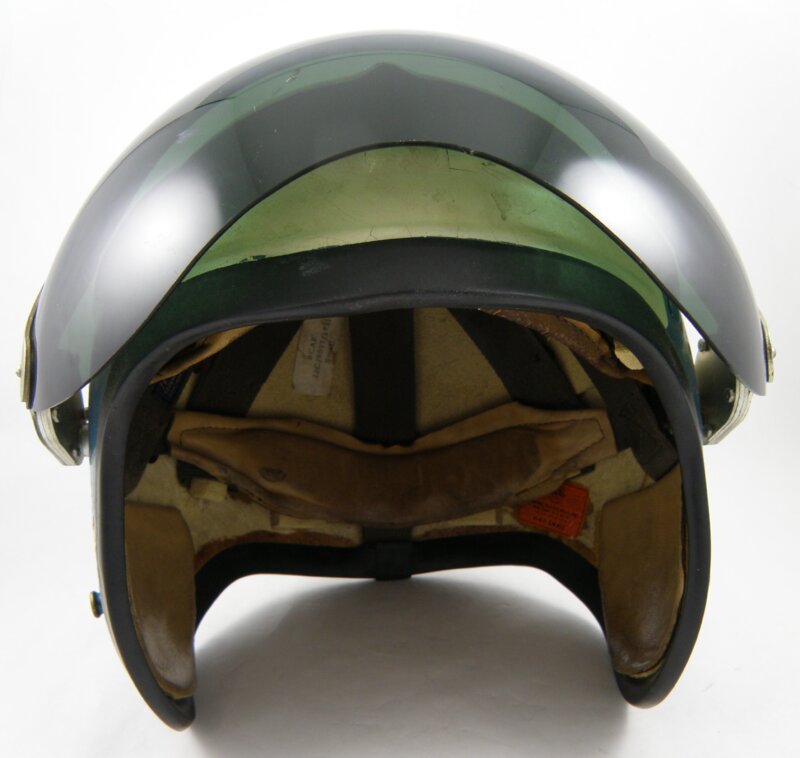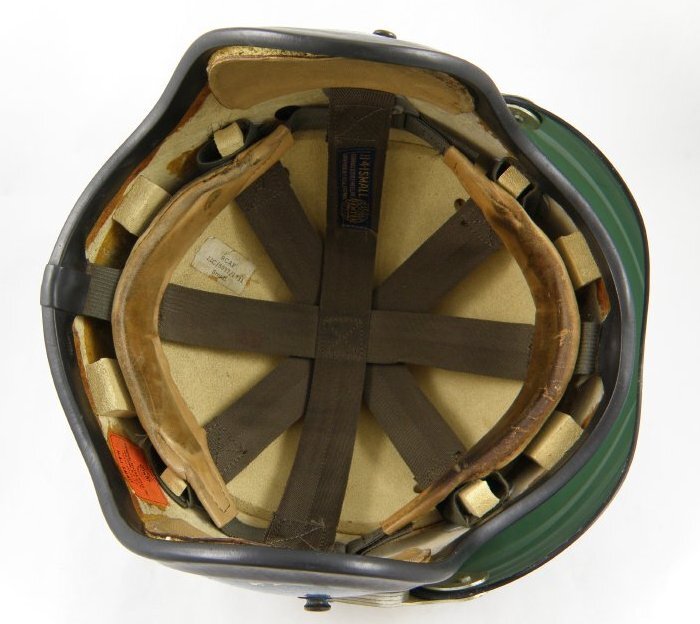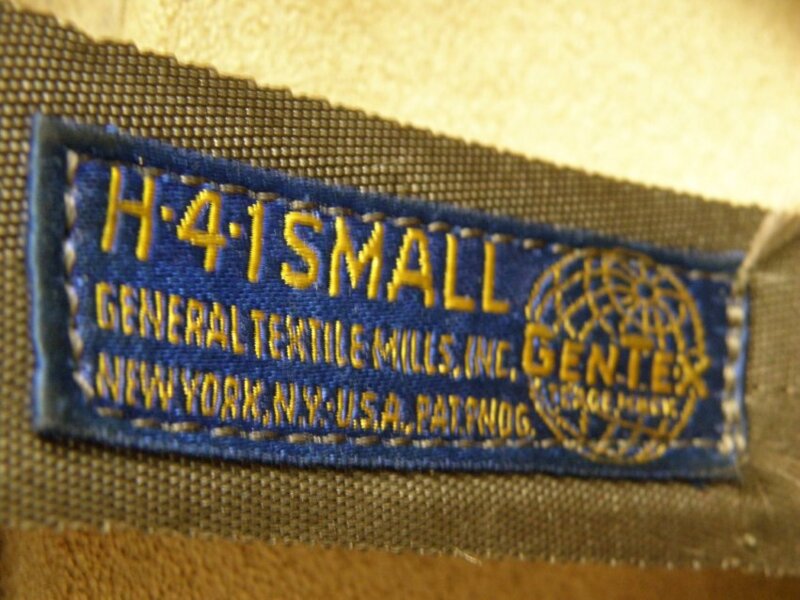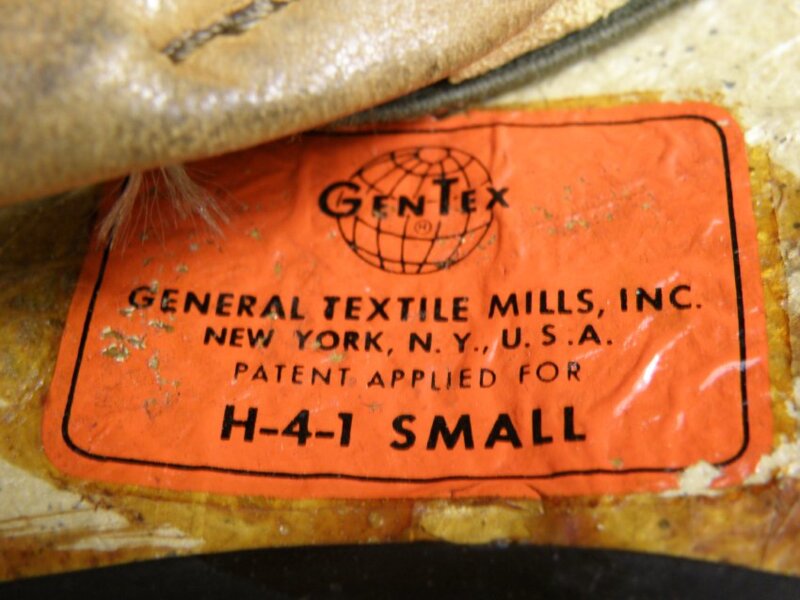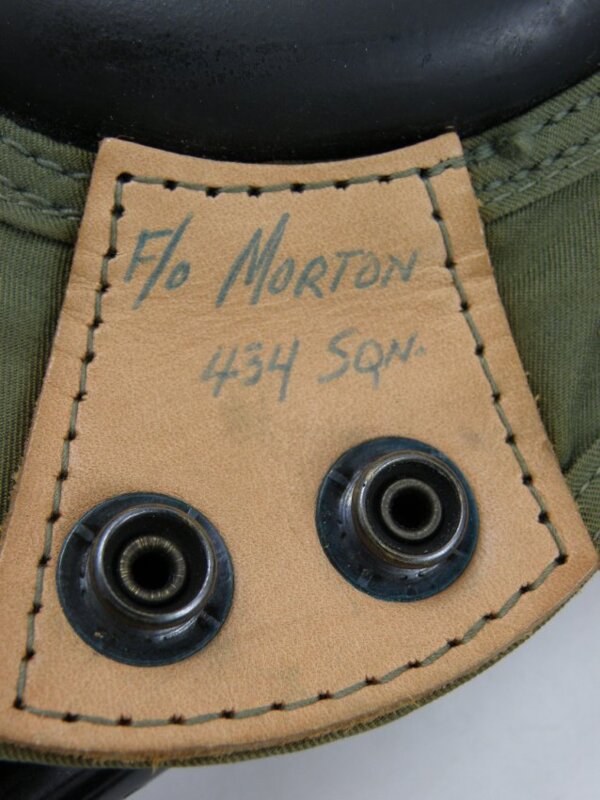Helmet
Item
Title
Helmet
Description
Gentex Flight Helmet H-4-1 Model, size 22c/5097/1731. Helmet is painted white (in a sunburst fashion) and blue, with 434 Bluenose logo on either ear cap. Number "87" and nickname of donor "MORT" painted in white on back of helmet. The brow area of the H-4 helmet was lowered in comparison with the H-3 helmet, and this gave the latter a "heavier" appearance, both when seen from the front and from the sides. Like the H-3, the H-4 consisted of a cloth inner liner and a separate outer hard-shell. The strap suspension assembly only rear part of the headband is adjustable. The external adjustment strap was therefore shorter and placed further to the rear. Note the raised area around the rivet above the face opening curvature; another feature where the Inside of the outer hard-shell showing the strap suspension assembly there is a lack of communication gear.
Identifier
004.104.001a
Provenance
Helmet belonged to donor while serving with RCAF 434 Bluenose Squadron in Germany with NATO forces. Until the late 1940s, fighter pilots had little more than cloth or leather helmets and goggles to protect their heads from oil spray or bumps in the cockpit. With the arrival of high-performance jet aircraft and ejection seats, the U.S. military began to take head protection seriously. The result: a “hard hat” for flight crews—the H-1 helmet for the Navy and P-1 for the Army Air Forces (forerunner of the Air Force)—that became standard-issue gear in 1947. “Take a fighter helmet from the early 1950s and one from a contractor’s lot now, and they make them not as cheaply but largely the same,” says Harry Hurt, who runs the non-profit Head Protection Research Laboratory in Paramount, California. While today’s helmets have the same basic structure—a hard outer shell mated to a soft impact-absorbing liner—as those designed six decades ago, their shapes, colours, materials, and capabilities have changed significantly.

